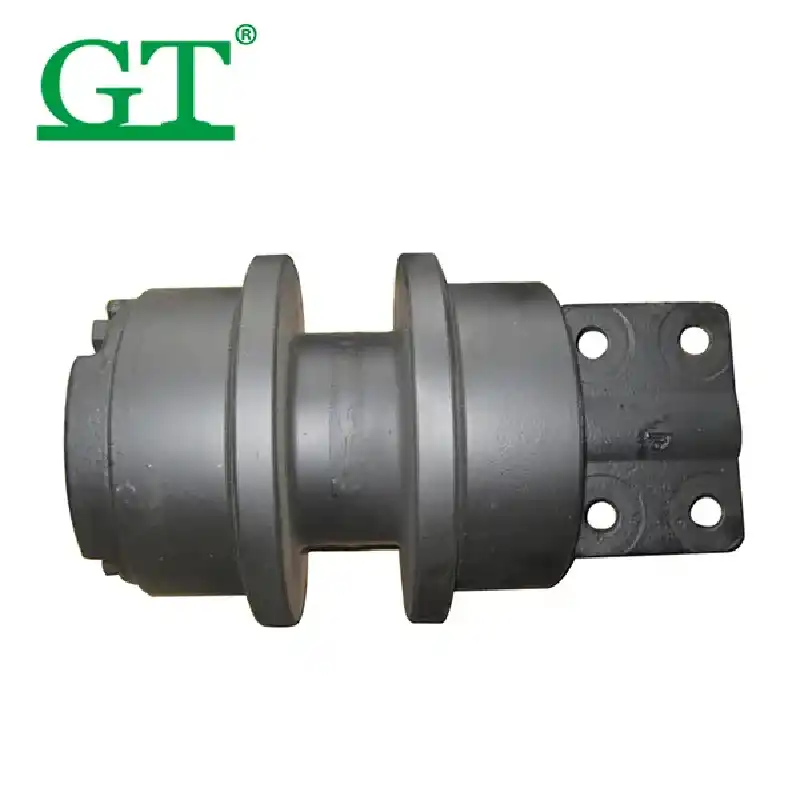#704,No.2362,Fangzhong Road,Xiamen,Fujian,China,361009 +86-18350098686 [email protected]
Understanding the roles of components in excavator undercarriage systems is crucial for peak performance. Carrier rollers and return rollers, often mixed up, each have unique functions for smooth operation. This article explores their differences, purposes, and why selecting a reliable carrier roller supplier extends your excavator’s life.
Known as upper rollers, carrier rollers are vital for excavators. Positioned atop the track frame, they
For instance, large excavators with steel tracks, like dozers, depend on a carrier rollers for track stability. Without these, tracks might twist or sag, causing inefficiencies and potential damage.

Return rollers, on the other hand, are located on the underside of the track frame. Their primary functions include:
Unlike carrier rollers, return rollers are not always present in smaller equipment. Their necessity depends on the machine’s size and design.
While both components are essential for an excavator’s undercarriage, they differ in several ways:
| Aspect | Carrier Roller | Return Roller |
|---|---|---|
| Position | Top side of the track frame | Underside of the track frame |
| Primary Function | Prevent track sagging and derailment | Guide the track back to the sprocket |
| Load Distribution | Supports the machine’s weight | Supports the track’s return path |
| Presence | Found in most excavators, especially larger ones | Not always present in smaller equipment |
Selecting a reliable carrier roller supplier is crucial for maintaining your excavator’s performance. High-quality carrier rollers ensure:
For example, XMGT, a professional carrier roller supplier, works with international brands like BERCO and ITM. They offer OEM undercarriage parts that meet top industry standards, ensuring peak efficiency for your excavator.
Both carrier rollers and return rollers are subject to wear and tear. Recognizing the signs of wear can help you address issues before they escalate:
Regular inspections and timely replacements are essential to avoid costly repairs and downtime.
Carrier rollers come in various designs to suit different excavator models and operating conditions. The most common types include:
Choosing the right type depends on your equipment’s size, brand, and operational requirements.
Proper maintenance can significantly extend the life of your undercarriage components. Here are some tips:
Understanding the difference between carrier rollers and return rollers is essential for maintaining your excavator’s undercarriage system. While carrier rollers prevent track sagging and derailment, return rollers guide the track back to the sprocket. Both components play vital roles in ensuring smooth operation and minimizing wear.
For high-quality excavator carrier roller, rely on XMGT, a trusted and professional supplier. They collaborate with brands like BERCO and ITM, providing OEM undercarriage and G.E.T. parts to renowned companies such as ITR and ITM. Reach out at [email protected] for pricelists, discounts, and expert advice. We are eager to assist you!

